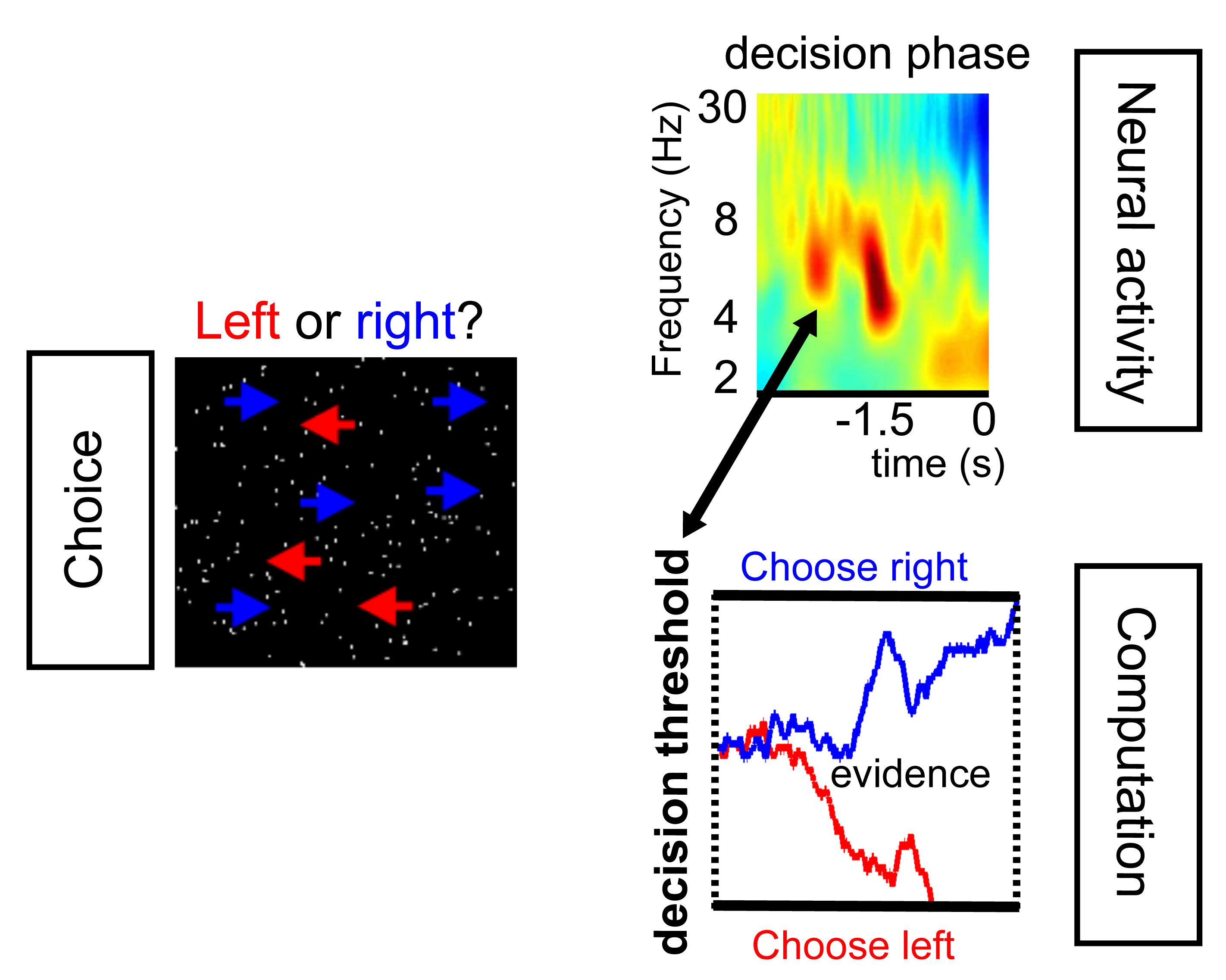Neural Correlates of Decision Thresholds in the Human Subthalamic Nucleus.
When faced with difficult choices, we have to slow down our responses to make sure the right decision is taken. Here, we show how the interaction between two key brain areas sets the threshold for how much evidence in favour of a given choice is needed before we can respond. This interaction depends on specific brain waves and only kicks in when cautious responding is necessary.
If humans are faced with difficult choices when making decisions, the ability to slow down responses becomes critical in order to avoid suboptimal choices. Current models of decision making assume that the subthalamic nucleus (STN) mediates this function by elevating decision thresholds, thereby requiring more evidence to be accumulated before responding [1-9]. However, direct electrophysiological evidence for the exact role of STN during adjustment of decision thresholds is lacking. Here, we show that trial-by-trial variations in STN low-frequency oscillatory activity predict adjustments of decision thresholds before subjects make a response. The relationship between STN activity and decision thresholds critically depends on the subjects' level of cautiousness. While increased oscillatory activity of the STN predicts elevated decision thresholds during high levels of cautiousness, it predicts decreased decision thresholds during low levels of cautiousness. This context-dependent relationship may be mediated by increased influence of the medial prefrontal cortex (mPFC)-STN pathway on decision thresholds during high cautiousness. Subjects who exhibit a stronger increase in phase alignment of low-frequency oscillatory activity in mPFC and STN before making a response have higher decision thresholds and commit fewer erroneous responses. Together, our results demonstrate that STN low-frequency oscillatory activity and corresponding mPFC-STN coupling are involved in determining how much evidence subjects accumulate before making a decision. This finding might explain why deep-brain stimulation of the STN can impair subjects' ability to slow down responses and can induce impulsive suboptimal decisions.

2016.Curr. Biol., 26(7):916-20.
2022. Nat Commun, 13(1):7530.
2017.J Exp Psychol Gen, 146(6):776-805.
2015.Hum Brain Mapp, 36(10):4041-4052.